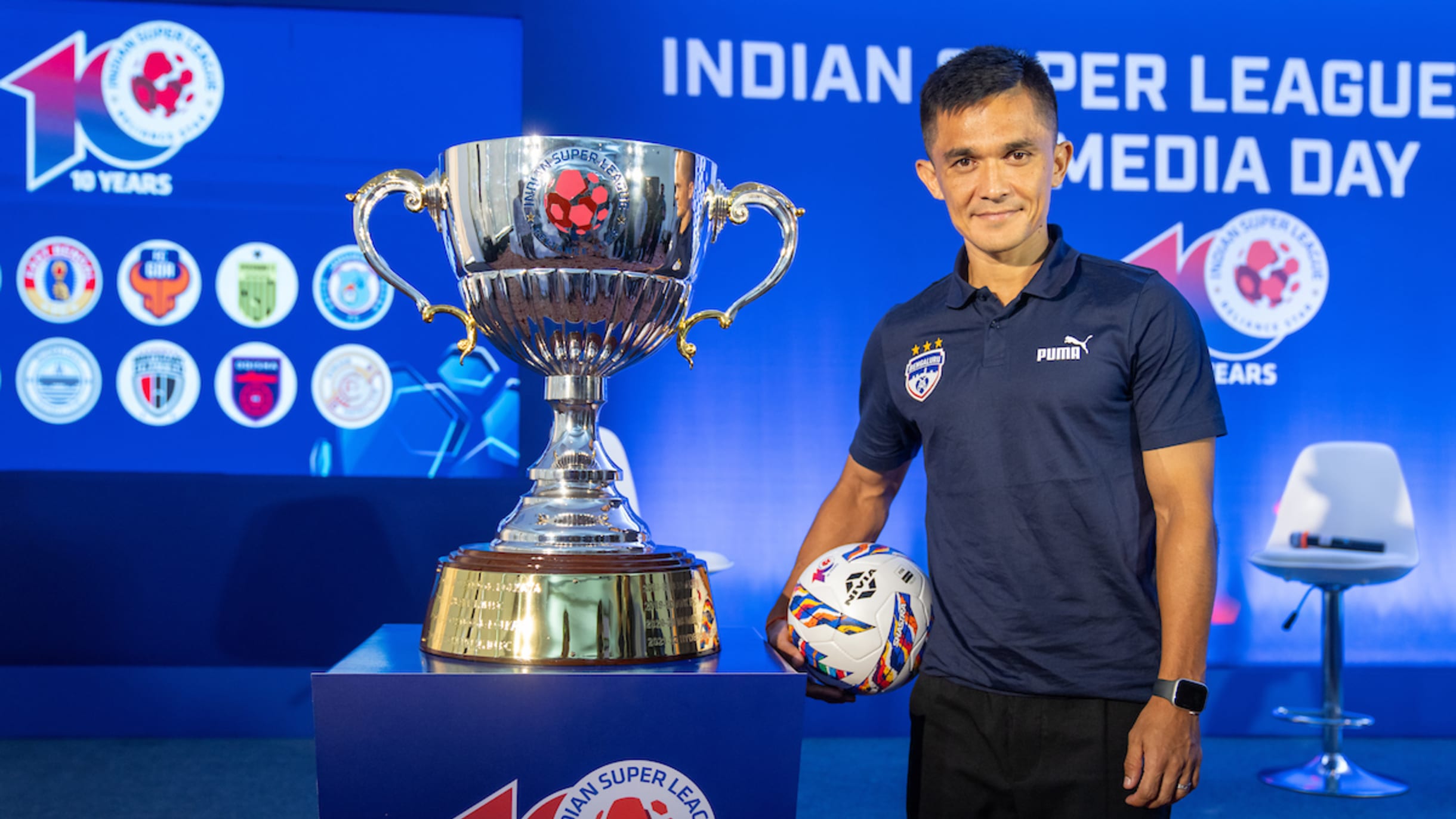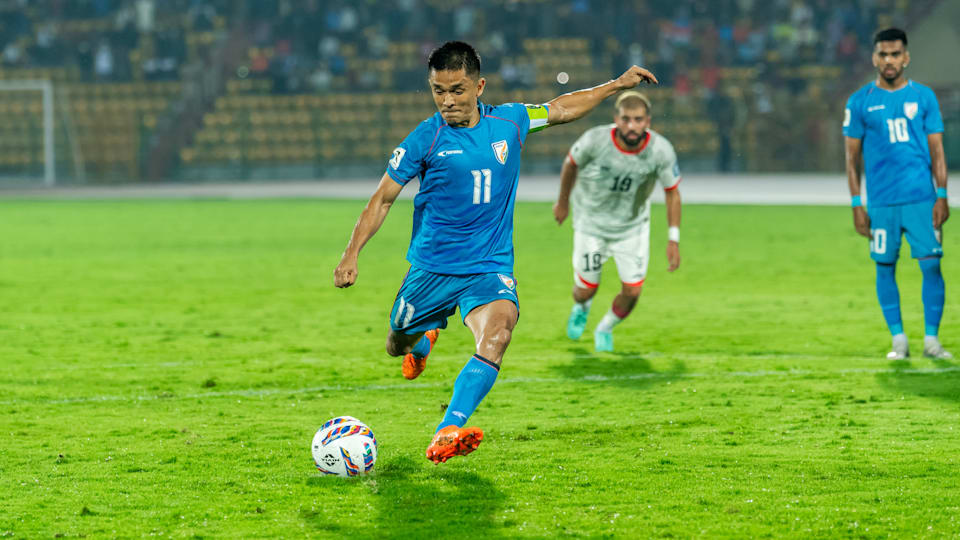Introduction to Indian Super League
India, a nation with a rich sports culture, has long been dominated by cricket. However, the Indian Super League (ISL) has emerged as a game-changer for Indian football. Launched in 2013, the ISL has aimed to popularize football, develop local talent, and create a league that matches international standards. This extensive article explores the ISL’s journey, impact, and future, covering its historical background, league structure, key players, memorable moments, challenges, and prospects.
Historical Background of Indian Super League


The Inception of the Indian Super League
The Indian Super League was established to rejuvenate Indian football. Prior to the ISL, the I-League served as India’s premier football competition. However, it struggled with limited viewership, financial issues, and lack of widespread appeal. Recognizing the need for a more engaging and commercially viable league, the All India Football Federation (AIFF) partnered with IMG-Reliance and Star Sports to launch the ISL. Nita Ambani, a prominent businesswoman, played a pivotal role as the league’s chairperson, guiding its vision and mission.
The ISL adopted a franchise-based model similar to the Indian Premier League (IPL) in cricket. This model aimed to attract investments, increase fan engagement, and create a competitive football environment in India. The league’s primary objectives were to increase football’s popularity, improve the standard of play, and develop football infrastructure across the country.
The Inaugural Season and Initial Challenges
The ISL’s inaugural season in 2014 featured eight teams representing major Indian cities. These teams included Atletico de Kolkata, Chennaiyin FC, FC Goa, and Kerala Blasters. The league’s format, which involved a player draft and a mix of domestic and international players, aimed to ensure competitive balance and support local talent development.
The initial years were challenging. The league faced logistical issues, limited football infrastructure, and skepticism from traditional football fans. However, the involvement of celebrity owners, including Bollywood stars and cricket legends, brought glamour and media attention, helping to overcome these challenges. The league’s first final, between Chennaiyin FC and FC Goa, set the tone for future competitions, showcasing the league’s potential for high-quality football and entertainment.
Indian Super League Structure and Format


Teams and Season Format
As of now, the Indian Super League features 13 teams representing different regions or cities in India. The league follows a double round-robin format, where each team plays every other team twice, once at home and once away. The regular season typically runs from October to March. The top four teams from the regular season standings qualify for the playoffs, culminating in the ISL Final, where the champions are crowned. Additionally, the team with the most points during the regular season receives the League Winner’s Shield.
Salary Cap and Player Regulations
To maintain a competitive balance, the ISL enforces a salary cap for each team. This cap prevents wealthier franchises from monopolizing top talent, ensuring a level playing field. The league also mandates a specific quota of Indian players in the playing XI. This rule promotes the development of local talent by providing Indian players with valuable playing time and exposure to international competition.
The player draft system and the inclusion of marquee players have further enriched the league’s quality and diversity. Marquee players, typically high-profile international stars, bring experience and expertise, raising the league’s standard of play and drawing more fans to the sport.
Impact of Indian Super League on Indian Football

Rising Popularity and Viewership of Indian Super League
The Indian Super League has significantly increased football’s appeal in India. The league’s matches are broadcast live on major television networks and streaming services, reaching millions of viewers nationwide. The involvement of celebrities as team owners has added to the league’s allure, attracting a broader audience. The ISL’s digital presence, including active social media campaigns and engaging content, has further amplified its reach, making football more accessible and appealing to a younger demographic.
The ISL’s marketing strategies, including promotional events, merchandise sales, and fan engagement activities, have played a crucial role in building a loyal fan base. The league has successfully created a vibrant football culture, with fans passionately supporting their regional teams. This cultural shift is evident in the increasing number of fan clubs, organized viewing parties, and active participation on social media platforms.
Development of Indian Talent and Infrastructure
One of the ISL’s core objectives is to nurture Indian football talent. The league’s regulations ensure that Indian players get ample playing time, allowing them to gain valuable experience alongside seasoned international professionals. This exposure has been particularly beneficial for young Indian players, who have had the opportunity to hone their skills and showcase their talent on a larger stage.
The ISL has also spurred significant investment in football infrastructure across India. Clubs have established state-of-the-art training facilities and youth academies, which are essential for developing future football stars. These initiatives, coupled with grassroots programs and football schools, have created a robust pipeline for identifying and nurturing young talent from an early age. The focus on grassroots development is crucial for the long-term growth of Indian football, as it ensures a steady supply of skilled players for both the national team and the ISL clubs.
Economic Effect and Financial Growth
The financial landscape of Indian football has been transformed by the ISL. The league has attracted substantial investments from corporate sponsors and individual investors, including high-profile personalities. Revenue streams such as broadcast rights, sponsorship deals, and merchandise sales have contributed to making football an economically sustainable sport in India. This influx of funds has not only improved player wages and facilities but has also paved the way for the league’s expansion and development.
The ISL’s economic impact extends beyond the football industry. The league has stimulated local economies, with increased demand for services such as hospitality, tourism, and retail. The growth of football-related businesses, including merchandise sales, media coverage, and sports management, has created new job opportunities and contributed to economic growth.
Cultural Impact and Formation of a Football Fanbase
The ISL has had a profound cultural impact, helping to establish a vibrant football culture in India, traditionally a cricket-obsessed nation. The rise of regional pride and fan loyalty towards respective franchises has been a defining feature of the league. Fan clubs, social media engagement, and community activities organized by clubs have all contributed to creating a passionate and engaged fanbase. The ISL has also inspired a new generation of football enthusiasts, fostering a deeper appreciation for the sport.
The league has successfully leveraged the cultural diversity of India by promoting regional representation and local identities. Each team represents a specific city or region, fostering a sense of pride and belonging among fans. This regional connection has been instrumental in building a loyal fanbase and creating a unique football culture that reflects India’s diversity.
Key Players and Teams


Standout Players
The ISL has featured many standout players, both domestic and international. Indian stars like Sunil Chhetri, Sandesh Jhingan, and Anirudh Thapa have become household names. Sunil Chhetri, in particular, has been a talismanic figure in Indian football, consistently performing at a high level and inspiring young players. Sandesh Jhingan’s commanding presence in defense and Anirudh Thapa’s creativity in midfield have also made them key players in the league.
International stars such as Diego Forlan, Roberto Carlos, and Alessandro Del Piero have graced the league, bringing attention and setting high standards of play. These players have not only enhanced the quality of football in the ISL but have also served as mentors to young Indian players. Their presence has provided invaluable learning experiences, helping to raise the overall standard of Indian football.
Successful Teams of Indian Super League
Several ISL teams have achieved great success since the league’s inception. ATK Mohun Bagan, Mumbai City FC, and Bengaluru FC stand out due to their consistent performances and strategic gameplay. These clubs have won multiple titles and played a vital role in developing local talent and creating a professional football culture in India.
ATK Mohun Bagan, formerly known as Atletico de Kolkata, has been one of the most successful teams in the league, winning several championships. Mumbai City FC, with its strong squad and strategic investments, has also emerged as a dominant force. Bengaluru FC, known for its passionate fanbase and well-organized management, has consistently performed well, making significant contributions to Indian football.
Foreign Players and Coaches
The presence of international players and coaches has been instrumental in raising the ISL’s standard of play. Their experience has enhanced the league’s quality, providing invaluable learning experiences for Indian players. Coaches like Antonio Habas, Sergio Lobera, and Carles Cuadrat have brought tactical acumen and professionalism, greatly aiding the league’s growth.
These international coaches have introduced advanced training techniques, tactical innovations, and professional management practices, contributing to the overall development of Indian football. Their influence extends beyond the ISL, as many Indian coaches and players have adopted these practices, raising the standard of football at the grassroots and professional levels.
Notable Matches and Moments of Indian Super League
Memorable Matches
Since 2014, the ISL has delivered many memorable matches. One notable match was the 2015 final, where Chennaiyin FC outwitted FC Goa in an exciting finish. Another significant game was the 2020-21 final, where Mumbai City FC defeated ATK Mohun Bagan, securing both the league and shield titles.
These matches have not only been thrilling for fans but have also showcased the league’s competitive nature and high level of play. The ISL has provided a platform for players to perform on a big stage, with many matches featuring spectacular goals, tactical masterclasses, and dramatic comebacks.
Historic Accomplishments
The ISL has seen many historic achievements, such as record goal tallies and individual performances. An example is Kerala Blasters’ 8-0 win against Mumbai City FC in the 2024 Durand Cup, showcasing the league’s improving competitiveness and quality. This match was particularly notable for the performances of debuting players Noah Sadaoui and Kwame Peprah, who both scored hat-tricks, highlighting the league’s depth of talent.
Another historic moment was Sunil Chhetri becoming the league’s all-time top scorer, a testament to his consistency and quality over the years. Chhetri’s achievement was celebrated by fans and players alike, underscoring his status as a legend of Indian football.
Challenges and Criticisms
Short Season and Player Development
One major criticism of the ISL is its relatively short season compared to traditional leagues. This limits players’ exposure and development, impacting form and fitness. Extending the season to align with global football calendars has been suggested as a solution. A longer season would provide players with more competitive match experience, crucial for their development and for raising the overall standard of Indian football.
Quality of Play and Infrastructure
Despite improvements, the ISL still lags behind top international leagues in quality and infrastructure. There is a need for further improvements to meet global standards. Upgrading stadium facilities, improving training grounds, and investing in youth academies are essential for the league’s long-term success.
The quality of play, while improving, still has room for growth. The ISL needs to attract and retain top international talent and develop a strong pool of domestic players. This requires investments in coaching, scouting, and player development programs. Furthermore, coordination between the ISL and other football bodies, such as the I-League, needs improvement to create a more cohesive football ecosystem in India.
Management and Organization Issues
The ISL has faced management and organizational challenges, including scheduling conflicts, venue issues, and disputes over player transfers and contracts. These obstacles must be addressed effectively for sustained league growth. Transparent and consistent management practices are essential for building trust among stakeholders, including players, clubs, and fans.
Improving the league’s organization also involves better collaboration with other football entities in India. A unified approach to developing football in the country, with clear pathways for players from grassroots to professional levels, is crucial for the sport’s growth. The ISL can play a leading role in this process by working closely with the AIFF, state associations, and other leagues.
Future Prospects for Indian Super League

Expansion and Inclusion
The ISL has ambitious expansion plans to broaden its appeal and increase popularity. Discussions include linking the league more closely with traditional football pyramids in India, providing clearer pathways for promotion and relegation. Expanding the league to include more teams from different regions can help tap into the diverse football fanbase in India.
This expansion is not just about increasing the number of teams but also about improving the quality of football. The ISL needs to ensure that new entrants have the infrastructure, talent, and financial backing to compete at a high level. This will help maintain the league’s competitive balance and quality of play.
Grassroots Development
The future success of the ISL depends on effective grassroots development. Significant strides have been made, but sustained investments in youth academies are essential for continued growth. The league must work with clubs, schools, and local organizations to identify and nurture young talent. Grassroots initiatives, such as coaching clinics, youth leagues, and talent scouting programs, are critical for building a strong foundation for Indian football.
The ISL’s role in grassroots development extends beyond just providing financial support. The league can set standards for youth coaching, player welfare, and development programs. By promoting best practices and ensuring that young players receive high-quality training and support, the ISL can help develop the next generation of Indian football stars.
International Competitiveness
The ISL aims to achieve international recognition and competitiveness. Indian clubs need to perform well in international tournaments like the AFC Champions League. This requires investments in infrastructure, coaching, and player quality, as well as retaining top Indian talent while recruiting quality foreign players.
To compete internationally, ISL clubs must focus on building strong squads with a mix of experienced internationals and promising domestic talent. This includes not only on-field talent but also coaching and support staff who can bring in global best practices. The ISL’s success on the international stage will also depend on improving the overall standard of football in India, from grassroots to the professional level.
Conclusion
The Indian Super League has been a transformative force in Indian football. It has brought football into the mainstream, provided a platform for emerging talent, and attracted significant investment. The ISL’s influence extends beyond football, shaping India’s cultural landscape and sparking new interest in the sport.
However, challenges remain, such as extending the season and improving infrastructure. Addressing these issues is crucial for the league’s continued growth and success. As the ISL evolves, it has the potential to become a significant player on the global football stage, representing India’s growing passion for the beautiful game.
The ISL’s journey has been remarkable, but it is far from complete. With continued focus on development, investment, and innovation, the league can reach new heights and contribute significantly to the global football community. The future of Indian football looks promising, and the ISL will undoubtedly play a central role in shaping it.





